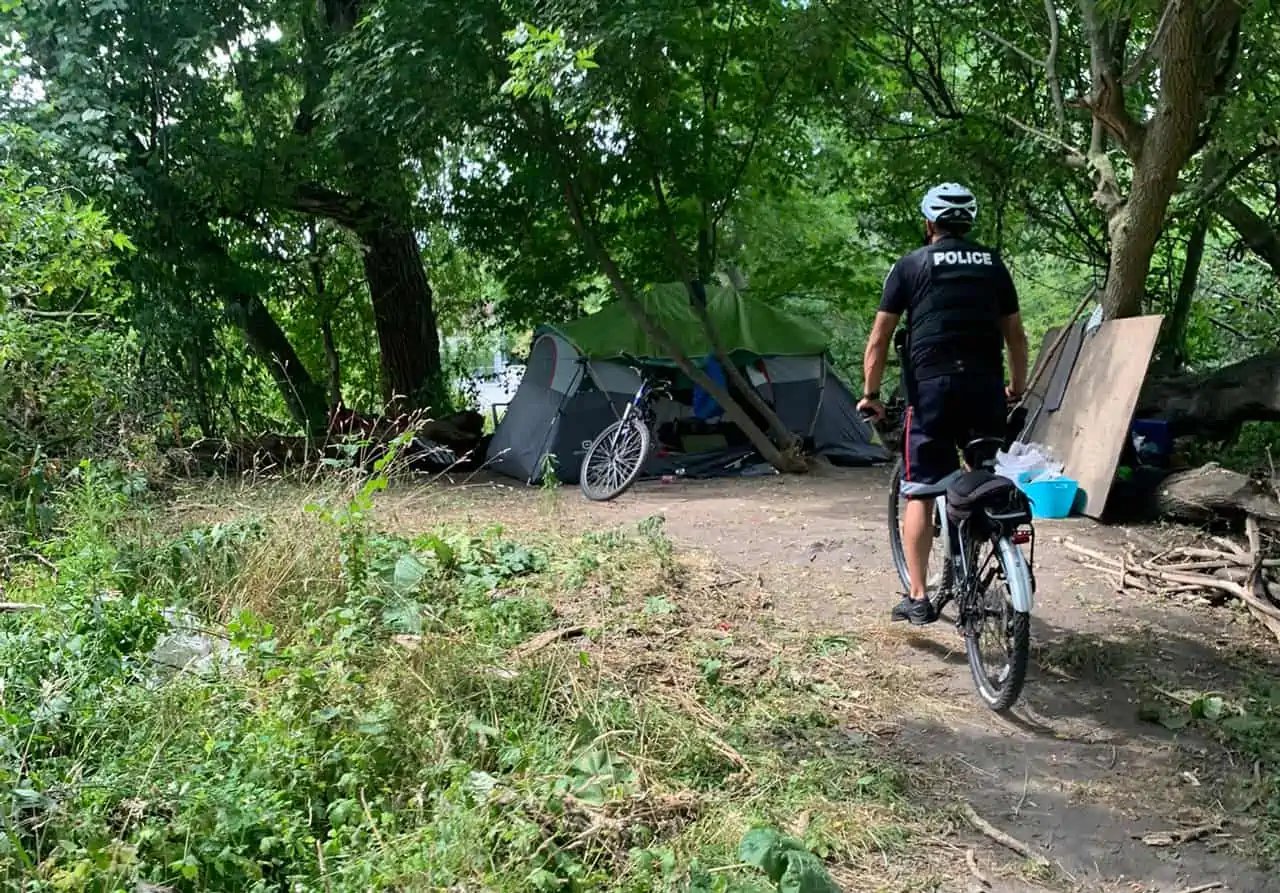Crime prevention plan for Oshawa Creek valleylands to be debated Monday
Published September 13, 2024 at 11:12 am

Oshawa will vote on a crime prevention plan for the Oshawa Creek lands south of downtown Monday, with a natural surveillance method that involves regular pruning of trees and brush to improve sightlines into the valley lands deemed the least invasive on the environment and on private landowners.
Issues with homeless camps and drug use in the forested area west of Simcoe Street and accessible at Quebec, Fairbanks, Royal, Avenue, Hall and Mill streets was the trigger for Oshawa Council to strike a joint Community and Operations Services and Safety Facilities Services committee to study several crime prevention options.
City staff visited the six streets where they ended at the creek valley to come up with “remedial and proactive actions” that could be taken to improve safety through environmental design.
Four options will be presented to committee Monday:
- Natural Surveillance and Increase Visibility: Develop a vegetation management plan that includes regular pruning of the trees and brush to maintain clear sightlines. Remove invasive species and replace them with low-growing, native plants that do not obstruct visibility.
- Maintenance Management: Establish a routine maintenance schedule to keep the transition zone clean and well-kept. Regularly inspect and promptly address any signs of vandalism or illegal dumping. Provide adequate waste disposal options at the end of streets and along forest paths. Conduct regular patrols by bylaw officers and security or volunteers to monitor activity and maintain a visible presence. Encourage community involvement in regular clean-up efforts and forest stewardship programs.
- Territorial Reinforcement: Use landscaping, signage, and physical barriers to clearly define the boundary between the street and the forest. Install features such as low fences, hedges, or decorative markers to signal the transition while maintaining aesthetic appeal. Encourage community involvement in the maintenance and surveillance of the area.
- Lighting: Install adequate, vandal-resistant lighting to illuminate the transition zone between the street and the woodlots
Each option came with a few constraints, notably that the woodlots outside the right-of-way on Quebec Street, Fairbanks Street and Royal Street are privately owned and permits may be required for the removal of any trees.
Oshawa also has a Woodlot and Ravine Management standard that declares that “naturalized wooded areas should be left in their natural state and not manicured.” As well, the area is governed by the Central Lake Ontario Conservation and work could be subject to an Environmental Impact Study.
Staff also noted that there are “numerous negative impacts” with disturbing a natural woodlot area. “At a time where our tree canopy is decreasing and impacts from pests and disease are becoming more prevalent, we need to be more conscious around removals. Removing mass amounts of undergrowth from natural areas will decrease biodiversity and accelerate the spread of invasive species. If proper care is not given … these once natural areas will be filled with thickets of invasive species, noxious weeds and other undesirable vegetation that may require even more management than what is currently needed now.”
Staff are recommending Option 1 as having the least impact on the natural woodlot and on privately-owned properties, as well as being easier to implement, maintain and monitor and less expensive upfront costs.
Initial costs for Option 1 would be $13,000 with ongoing maintenance costs approximately $32,500 per year.
INdurham's Editorial Standards and Policies




